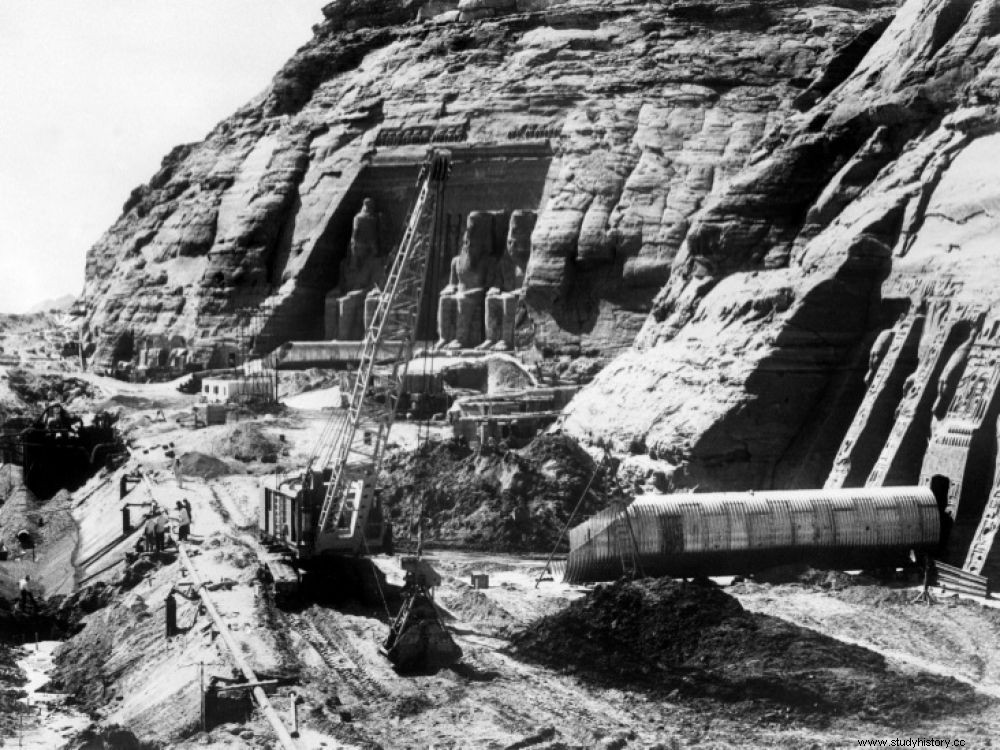These UNESCO-led archaeological rescue operations ended on September 22, 2018.

Workers cut up statues of Ramses II in preparation for transporting them to the new location of the two temples of Abu Simbel, Upper Egypt, December 24, 1964.
50 YEARS. September 22, 1968 marks the completion of the relocation of the Abu Simbel temples in southern Egypt. "This is the first time that an international cooperation movement of this magnitude has taken place in the field of culture" , said René Maheu, Director General of Unesco, the international institution that led the operation.
WHEN DATE THE TEMPLES OF ABU SIMBEL?
The two temples of Abu Simbel were carved into the rock on a hill overlooking the Nile in Upper Egypt. They were built by Ramses II, who ruled Egypt from 1298 to 1235 BC and dedicated to Osiris and Isis. The largest, behind its 32 meter high facade adorned with four colossal statues of the pharaoh, which represent him seated, sinks into a row of rooms and galleries 63 meters deep. Abu Simbel is one of the jewels of ancient Nubia, whose borders stretched along the Nile, dividing its territory between present-day Egypt and Sudan.
WHY DID ABU SIMBEL MOVE?
In the 1950s, Egypt saw the Nasserian revolution. The Aswan High Dam project (south) was launched by Gamal Abdel Nasser to provide the region with essential electrical energy, increase cultivable land and reduce flooding of the Nile. But the project poses threats to the monuments of Nubia, since its implementation must lead to the formation of a huge artificial lake, Lake Nasser. Many Pharaonic and Greco-Roman temples and chapels, including the temples of Abu Simbel, are in danger of being permanently submerged.
WHO MADE ABU SIMBEL'S MOVE?
Eight hundred workers and a hundred technicians worked for four years, in the middle of the desert, under a fiery sun. The operation is piloted by Unesco; About 50 countries have collaborated. Its cost is 36 million dollars.
WHAT WAS THE RELOCATION OF ABU SIMBEL?
Among all the proposed projects, it is the one issued by Sweden and Egypt that is retained. The operation was launched on April 1, 1964 with the construction of a cofferdam to protect the site against rising waters. It continues with the excavation of the cliff around the two temples. Abu Simbel is cut into 1035 blocks each weighing 20 to 30 tons. The four seated colossi and the six standing ones are sawn to pieces. Cylinders, cranes and winches of exceptional power are used to raise these enormous masses up to 64 meters in height and to regroup the blocks so as to reconstitute exactly the two temples at the top of the cliff. Artificial hills are then built to surround and crown the shrines.
